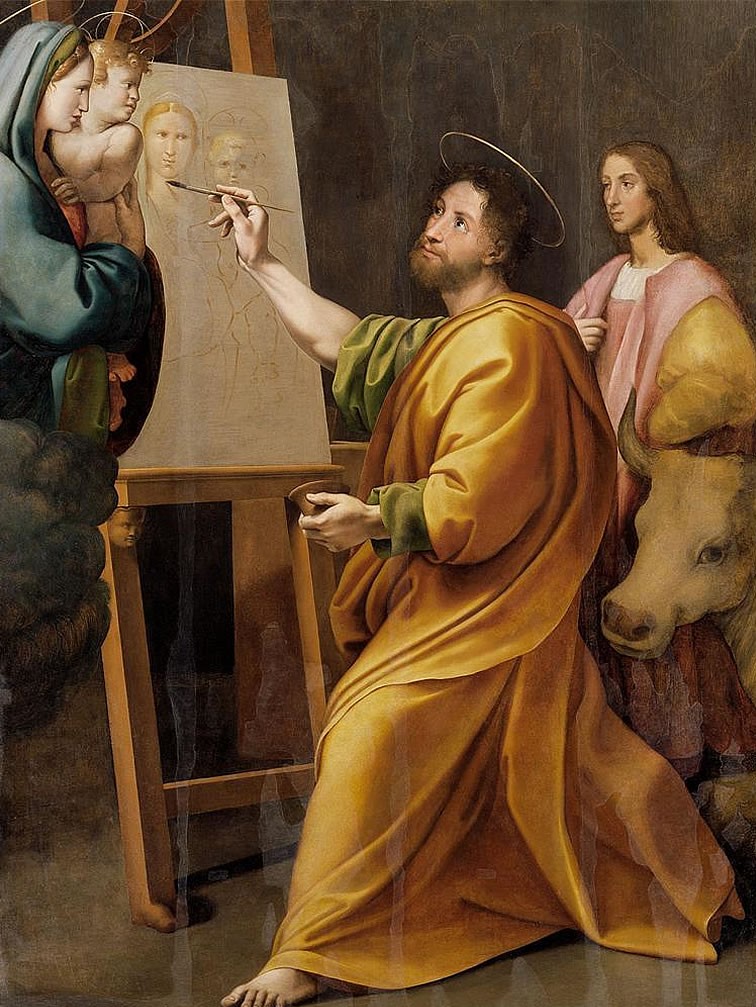Mary in the Gospel of Luke: Part II: The Annunciation
Fr. J. Patrick Gaffney, SMM
Slowly and prayerfully read Luke 1:26-38. [Mentally, ] summarize your reaction to these inspired verses and also note any questions they may raise. If possible, share them with your bible study group. Now that the verses are well known to you, and you have prayerfully reflected and discussed Luke’s annunciation narrative, we can begin a step-by-step examination of the text. Through the grace of the Holy Spirit, we will penetrate more deeply into this mystery which is the “compendium of all Christ’s mysteries” (True Devotion, 248).
The Annunciation
A though this is the first Lucan scene in which Mary appears, it is not the first scene of the infancy narrative. Luke has already spoken of the announcement of the birth of John the Baptizer (1:5-25). Have you noticed how the outline of both these scenes – the annunciation of John and the annunciation of Jesus – are so much alike? What points of similarity can you discover?
The reason for the resemblance is found in the Old Testament. There are basically several “steps” in biblical announcements of some Old Testament personages. Three main elements are stressed, i.e., the announcement itself of the birth, the naming of the child, and the explanation of the child’s destiny.
However, these three steps can be detailed into five: 1) the appearance of an angel or of the Lord to the mother or father; 2) fear and awe at the encounter with the heavenly messenger; 3) the message of the angel; this includes the naming of the child and the role the infant will play in salvation history; 4) a questioning by the person encountering the angel; the person may request a sign; 5) the angel announces a sign and/or gives reassurance. These steps are found in the announcements of the births of Ishmael (Gen 16:7-13), Isaac (Gen 17:1-21, 18:1-15) and Samson (Judges 13:3- 20).
Luke, or the Christian community before him, patterns the announcement of the births of John and Jesus on this Old Testament format. This will give Luke a structure through which he can proclaim the incarnation of the Eternal Word. More importantly, it teaches us that Jesus is the fulfillment of all the heroes who have gone before. By following the outline of the announcement of the miraculous births of Old Testament leaders, Luke insists that Jesus, the Son of the Most High (1:32), is truly part of the unfolding of salvation history. He is its culmination. The Wisdom of God while remaining our God, wills to be born into the human family. The climactic point of creation itself is being accomplished: the Word is made flesh.
Read the announcement of the birth of John the Baptizer (Lk 1:5- 25). Notice how the structure of the narrative dovetails with the above outline. And the annunciation to Mary of the birth of the Lord follows the identical format:
- First, the appearance of an angel (1:26-28).
- Second, Mary’s upset at the encounter with the angel (1:29).
- Third, the message of the angel, including the name and destiny of the child (1:30-33).
- Fourth, Mary’s questioning (1:34).
- Fifth, a sign is given and Mary reassured (1:35-37).
- The event concludes with Mary’s loving acceptance of the Lord’s will (1:38).

Gabriel, who announces to Daniel the coming of the final kingdom, now announces to Mary the fulfillment itself of God’s plan of redemption: Jesus the Lord, whose reign will have no end . . .
An examination of each of these elements will help us better understand the annunciation narrative.
1. The appearance of an angel. The angel who appears to Mary is the same who appeared to Zechariah (1:19); Gabriel, whose name means God is my warrior. The only time that Gabriel is mentioned in the Old Testament is in the Book of Daniel where he explains the vision of the ram and the he-goat (8:16-26). And, the meaning of the 70 years of captivity (9:21-27; cf Jeremiah 25:11; 29:10).
Gabriel, who announces to Daniel the coming of the final kingdom, now announces to Mary the fulfillment itself of God’s plan of redemption: Jesus the Lord, whose reign will have no end (Lk 1:33).
The presence of the Angel Gabriel not only joins the announcements of the birth of John and Jesus together, but more importantly, proclaims that Jesus’ birth is the fulfillment of Daniel 9:24-26. The 70 weeks of years – 490 – announced by Daniel for the coming reign of justice, is being fulfilled. Seventy weeks are de- creed for your people and your holy city; to finish the transgression, to put an end to sin, to atone for iniquity, to bring in everlasting righteousness, to seal both vision and prophet and to anoint a most holy one (Daniel 9:24).
Luke teaches us that in Jesus we find the fulfillment of both vision and prophet. By adapting Daniel’s seventy weeks, Luke emphasizes that in the announcement of the Lord God’s plan is fulfilled. For, according to the inspired author, after 180 days of Elizabeth’s pregnancy, Mary’s pregnancy of 270 days begins to be followed after 40 days by Jesus’ entry into the Temple: a total of 490. The very mention of Gabriel – which immediately refers us to the Book of Daniel – insinuates the realization of God’s redemptive plan in the annunciation of the birth of Jesus.
Our next installment will reflect on the person to whom Gabriel appears: “a virgin engaged to a man named Joseph of the house of David. The virgin’s name was Mary”.
(To be continued)
Vol. #009
July – August 2021


